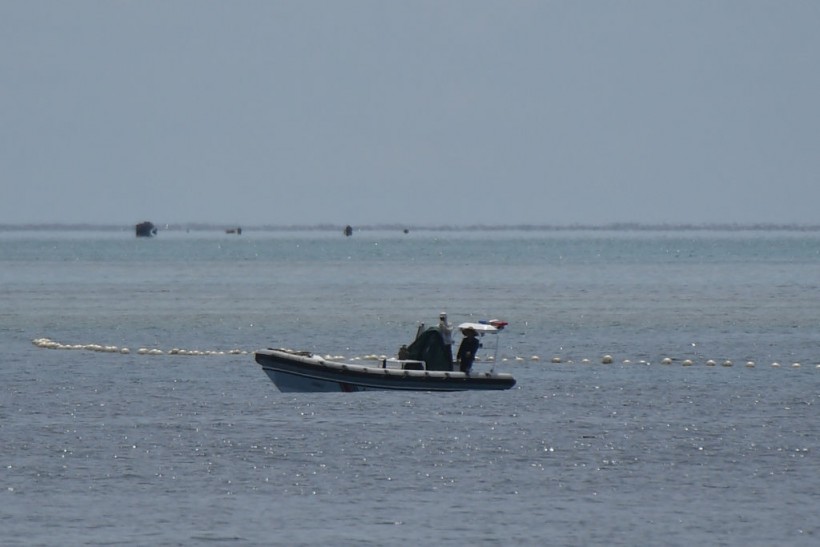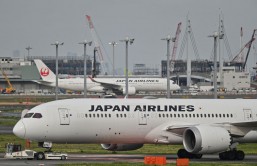
This photo taken on September 22, 2023 shows Chinese coast guard personnel aboard their rigid hull inflatable boat beside a floating barrier as they guard a passage to the Chinese-controlled Scarborough Shoal in disputed waters of the South China Sea. China, which claims sovereignty over almost the entire South China Sea, snatched control of Scarborough Shoal from the Philippines in 2012. Since then, it has deployed coast guard and other vessels to block or restrict access to the fishing ground that has been tapped by generations of Filipinos.
The Philippines voiced its disapproval of a "floating barrier" installed by the Chinese coast guard in a contested region of the South China Sea on Sunday, September 24. The local government said the barricade stopped Filipino vessels from accessing the area and fishing there.
The Floating Barrier
The partition was spotted by Philippine naval vessels on Friday, September 22, during a normal marine patrol. It was estimated to be roughly 300 meters (984 feet) in length, according to a statement posted on X (previously known as Twitter) by coastguard spokesman Jay Tarriela.
"The Philippine Coast Guard (PCG) and Bureau of Fisheries and Aquatic Resources (BFAR) strongly condemn the China Coast Guard's (CCG's) installation of floating barrier in the Southeast portion of Bajo de Masinloc (BDM), which prevents Filipino Fishing Boats (FFBs) from entering the shoal and depriving them of their fishing and livelihood activities."
After a Philippine government vessel arrived in the vicinity, Tarriela said the floating barrier had been built by three Chinese coast guard boats and a Chinese maritime militia service boat. He published images of the supposed barrier.
PCG and BFAR Condemn CCG’s Installation of Floating Barrier in the Southeast of BDM Shoal
— Jay Tarriela (@jaytaryela) September 24, 2023
The Philippine Coast Guard (PCG) and Bureau of Fisheries and Aquatic Resources (BFAR) strongly condemn the China Coast Guard’s (CCG’s) installation of floating barrier in the Southeast… pic.twitter.com/ed4cFtXcQs
Damaged Corals
Images showing large areas of shattered and bleached coral were posted by the Philippine coastguard last week, leading authorities to accuse China of extensive devastation in the region.
Tarriela said in a statement that the degradation and destruction of the marine environment in the West Philippine Sea features may have been directly caused by the ongoing swarming for the indiscriminate illegal and destructive fishing activities of the Chinese maritime forces in Rozul Reef and Escoda Shoal.
Crushed corals are a significant indicator of a possible act of dumping, Tarriela said, and they may come from the same dead corals that were cleaned and processed before being reintroduced to the seafloor.
During a routine briefing last week, the Chinese foreign ministry was questioned about destroying coral reefs and responded by calling the charges false and groundless. "We advise the Philippine authorities not to utilize fabricated information to stage a political farce," Spokesperson Mao Ning told reporters.
When monitoring a high number of Filipino fishermen in the region, Chinese warships reportedly always set up floating obstacles.
A tiny but significant reef and productive fishing field, Bajo de Masinloc (or Scarborough Shoal) is located about 130 miles (200 kilometers) west of the Philippine island of Luzon. China claims Huangyandao as its own, although it is only one of several contested islands and reefs in the South China Sea.
See Also: AFP to Increase Presence in West Philippine Sea-Alleging China of Massive Illegal Coral Harvesting








